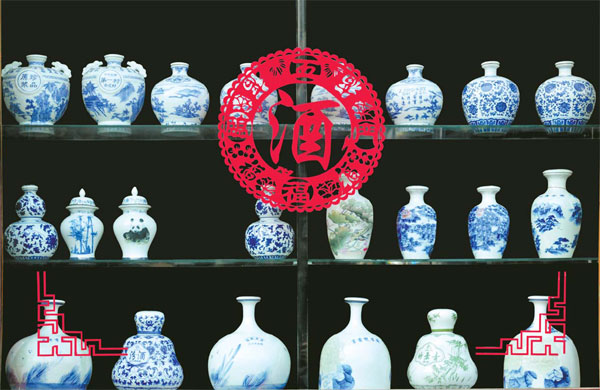New wave of world-beating companies
Updated: 2015-07-31 08:32
By Cecily Liu(China Daily Europe)
|
|||||||||||
Howard Yu says the new wave of Chinese digital-based companies have to have an international mindset from day one. Cecily Liu / China Daily

Knowledge-based, internationally savvy firms are taking on top businesses globally
A new wave of Chinese companies is riding on a disruptive method of globalization that allows them to challenge Western incumbents much quicker and effectively, says Howard Yu, professor of strategic management and innovation at IMD Business School in Lausanne, Switzerland.
Although traditionally Chinese companies have become globally competitive by leveraging their economies of scale rooted in the vast Chinese consumer market, this new wave of Chinese firms competes on creative use of digital technology and close interaction with consumers in each overseas markets, he says.
"These companies are fundamentally different. Whereas the more traditional Chinese manufacturing firms go global by building up scale in China first and slowly creating distribution across the world, these new digital-based companies have to go global from day one," Yu says.
Traditional methods of globalization are represented by companies like telecommunications giant Huawei and white-goods maker Haier, both of which have become global leaders, but such results took them decades.
This method of internationalization is not new, as Japanese and South Korean firms like Honda, Toyota and Kia have all experienced this process before. Key to this strategy is manufacturing strength rooted in the home market, which provides major support in international markets for their products, which provide good value to consumers.

But the new wave of Chinese companies, represented by the smartphone maker Xiaomi, Internet firm Tencent and e-commerce trader Alibaba, are not manufacturing-based so they had to succeed in global waters by leveraging the wisdom of the crowd. This gives them an international mindset from day one, says Yu.
Five-year-old startup Xiaomi, for example, became the world's third-largest smartphone distributor with a revenue of $12 billion (10.8 billion euros) in 2014. Such speed in growth and internationalization would have been unimaginable for more traditional companies that take much longer to build domestic strength to begin with.
At last year's end, Xiaomi became the world's most valuable technology startup after receiving $1.1 billion from investors, boosting Xiaomi's valuation to more than $46 billion.
Xiaomi does not have a strong manufacturing base because it outsources all assembly to Taiwan and does not own any factories, Yu notes. It also does not have a large team of software engineers because users are at the heart of its product development.
Xiaomi phones come with a MIUI operating system, which is an Android interface that allows hundreds of thousands of advanced users to customize it and invent new features. While Apple releases a new iOS every 18 months, Xiaomi launches a new version of MIUI every week. Its fan base has translated the original version into 24 different languages for markets outside China, Yu says.
"This model works because Xiaomi has realized that in China's domestic market, there is a large population of highly educated, digital savvy and young consumers who may not have high enough income to buy an Apple smartphone," Yu says.
At the same time, these consumers enjoy the feeling of their achievements being recognized and appreciated, so Xiaomi has captured this consumer demand and turned its software system into a user co-creation platform, he says.
"Such a setup has allowed Xiaomi to wring out disproportionate profits even when a comparable cellphone model from Samsung would cost at least twice as much. Xiaomi has risen to the top of the mobile industry in China by practicing open innovation, building a community of users and branching out into different mobile services in a concerted effort to monetize its base of phones."
Yu says this business model makes Xiaomi's international growth disruptive, because latecomers like Xiaomi pose a serious threat to global incumbents. By not focusing on manufacturing expertise, companies like Xiaomi are forced to have a much firmer international mindset, so they can replicate their close interaction with consumers in overseas markets.
"They need to speak the local language and cannot come across as a Chinese firm. They will build a new team of local management to be in charge of day-to-day decisions, and English will be the official language for a lot of day-to-day meetings.
"The Chinese management would travel outside of China a lot to understand local market needs, and this takes the competitiveness of Chinese enterprises to the next level," Yu says.
A similar example is WeChat, a Chinese challenger to WhatsApp, the instant messaging app purchased by Facebook last year for $19 billion. WeChat, developed by Chinese Internet company Tencent, started with a platform similar to that of WhatsApp, but quickly moved into new features that resonate with its client base.
WeChat's "shake" feature allows customers to find fellow users nearby, and its "moments" feature allows users to share photos and comments with friends in a blog format. But, more surprisingly, WeChat has leveraged its large customer base and trust it built up with its users to move into the payment field.
"WeChat excites its user base continuously and is not afraid of boundaries. For example, its payment function is something Viber and WhatsApp would never think of, but WeChat represents a new wave of Chinese companies willing to expand beyond business boundaries to bring experiences in a holistic, seamless way to consumers, constantly going into new offerings that make sense for consumers," Yu says.
Like Xiaomi, WeChat has rapidly expanded internationally, especially in markets like India, Malaysia, Mexico and the Philippines. As of August 2014, the four-year-old app had 438 million active users, with 70 million outside of China.
While this new method of internationalization is spearheaded by digital companies, the international mindset at its core can provide great inspiration to traditional Chinese manufacturing firms.
"For example, a business-to-business heavy machinery company would typically rely on the export model by building machines to ship abroad, but they could also partner with field workers and local firms to take their feedback into its manufacturing process," Yu says, adding that such a model would work well with machinery, automotives and construction equipment.
The selection of key overseas markets to expand into also is crucial to this strategy, because consumers in different markets have diverse characteristics when it comes to content co-creation, Yu says.
For example, Xiaomi has deliberately avoided the US market, because the United States does not have a large population of highly educated young people who would willingly spend a large amount of their time to develop content for a smartphone platform for free. Instead, Xiaomi has expanded to countries such as India, Indonesia and the Philippines, where the user characteristics are much more similar to China's.
"Xiaomi is trying to avoid moving too fast. By the time their product performance becomes very good, they will have built up capabilities, design and software, and then they can move into mature markets," Yu says.
He says this new method of internationalization also ties in with the hope of China to make a transition from an industrially based to a knowledge-based economy. Instead of entering the international market from a low-margin segment, they can now compete on high margins, taking market share from incumbents.
Over time, this trend will change the international perception of Chinese firms, and the commonly used phrase "made in China" will be substituted by "designed in China", and unique to Chinese design would be "something breathtaking in terms of scope", Yu says.
"For example, a typical designed-in-China product would not be a niche product like Swiss design, because China does not have that environment. A Chinese-designed product would be one that changes the rules of the game overnight by bringing a lot of benefits to a big class of people who are used to not have any alternative, by bringing something out of reach into reality," he says.
Also, the rapid internationalization of Chinese firms is also creating a fundamental change to the global investor base in terms of how it funds new ideas and where it funds new ideas, shattering the traditional geographical boundary of investment, he says.
"In the past, investment going into companies was geographically isolated, so that Chinese investors would likely invest in Chinese firms and US investors invest in US firms, and so on. But with Chinese firms internationalizing so rapidly, a new level playing field is created, so that geography no longer matters and what matters is whether your idea is good," Yu says.
cecily.liu@chinadaily.com.cn
Today's Top News
Beijing makes it, again!
Probable MH 370 debris to be studied in Toulouse
Graft probe into Guo Boxiong to win army, public's support
SOE reform to open door to foreign capital
Effect of Chinese stock volatility on real economy limited
Chinese tea aims to go global on Belt and Road Initiative
Sino-Turkish links highlighted
Debris found off Africa linked with Flight MH370
Hot Topics
Lunar probe , China growth forecasts, Emission rules get tougher, China seen through 'colored lens', International board,
Editor's Picks

|

|

|

|

|

|






